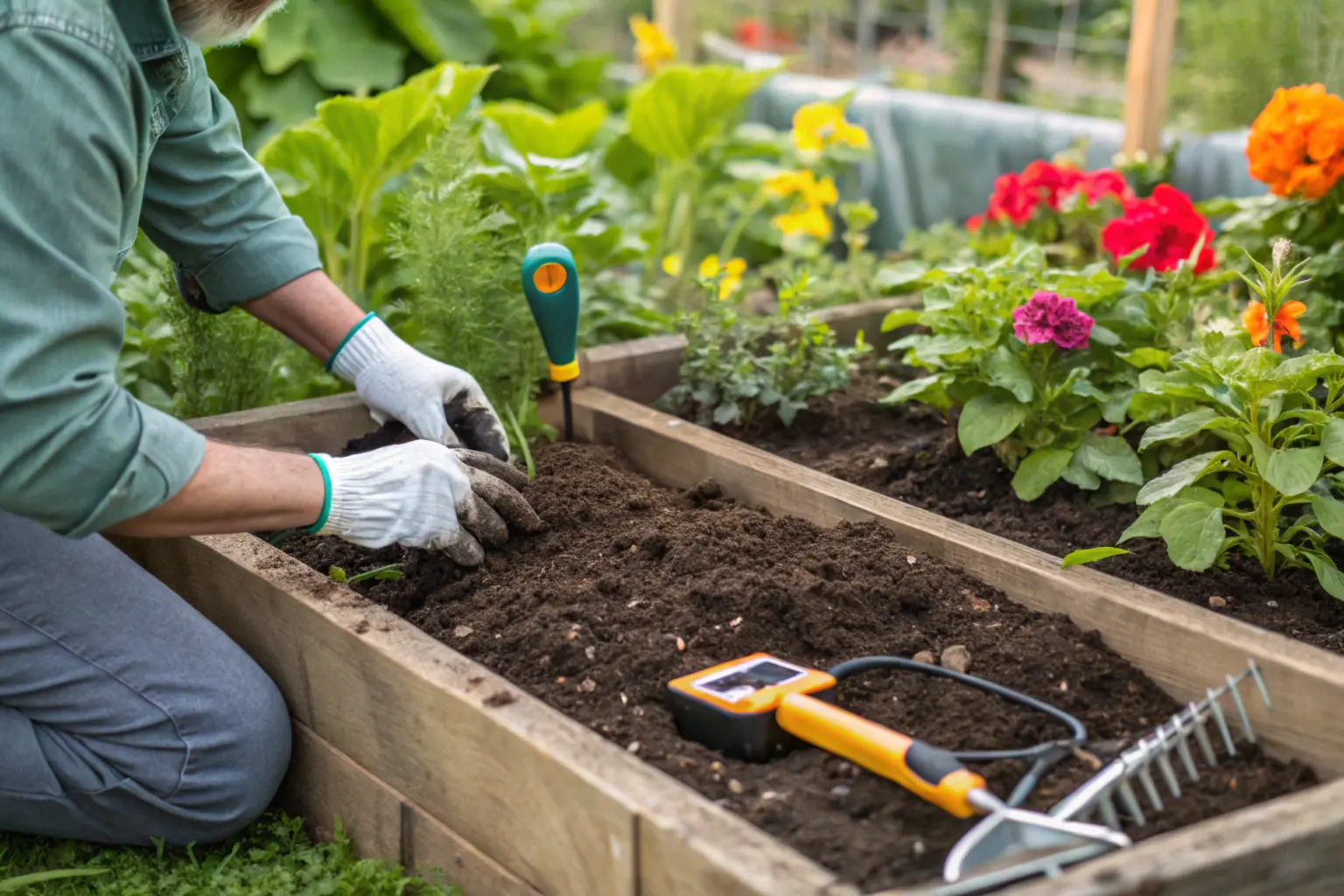A thriving garden starts with healthy soil. While soil preparation might not be the most glamorous part of gardening, it's undoubtedly one of the most crucial.
If your soil isn't right, your plants will struggle to reach their full potential. Let's dive into the essentials of preparing your garden soil to ensure your plants flourish.
Understanding Your Soil Type
Before you start planting, it's essential to know what type of soil you're working with. Soil can vary significantly in texture and composition, affecting its ability to retain moisture and nutrients. Here's a quick overview of the main soil types:
- Clay Soil: Dense and heavy, clay soil holds moisture and nutrients well but can become compacted and hard when dry.
- Sandy Soil: Light and free-draining, sandy soil allows water and nutrients to pass through quickly, which can be a challenge for plant growth.
- Silty Soil: Fine particles that pack together tightly, inhibiting drainage and air circulation.
- Loamy Soil: The ideal soil type for most plants, loam is a balanced mix of clay, sand, and silt, rich in organic matter.
To determine your soil type, take a scoop of soil and examine its texture. Is it dense and clumpy, or loose and crumbly? Understanding your soil type will help you make the necessary amendments to improve its structure.
Testing Soil pH
The pH level of your soil is a critical factor in determining its fertility. Most plants prefer slightly acidic soil with a pH between 6 and 7. If your soil is too acidic or too alkaline, it can affect the availability of essential nutrients. Here's how to test your soil pH:
- DIY Soil Test Kit: Purchase an instant-read soil test kit or electronic tester for quick results.
- Professional Soil Analysis: For a more comprehensive analysis, consider sending soil samples to a lab. They will provide detailed information on your soil's pH and nutrient content.
If your soil pH is too low (acidic), you can add lime to raise it. If it's too high (alkaline), add powdered sulfur or aluminum sulfate to lower it. Alternatively, choose plants that thrive in your soil's natural pH level.
Amending Your Soil with Organic Matter
Adding organic matter is one of the best ways to improve soil structure and fertility. Organic matter, such as compost, manure, and fallen leaves, enhances water retention in sandy soils and improves drainage in clay soils. It also provides a slow-release source of nutrients for your plants.
To amend your soil, work organic matter into the top 4 to 6 inches of soil using a garden fork. For vegetable gardens, amend the soil each season. For perennial gardens, amend the soil before planting to avoid disturbing plant roots later.
Encouraging Beneficial Microorganisms
Healthy soil is teeming with beneficial microorganisms, including earthworms, insects, fungi, and bacteria. These organisms help decompose organic matter, aerate the soil, and convert nutrients into forms that plants can absorb. To promote a thriving soil ecosystem:
- Keep Soil Moist: Maintain even moisture levels to support microbial activity.
- Minimize Pesticide Use: Many pesticides are harmful to soil life. Opt for organic pest control methods instead.
- Use Organic Fertilizers: Avoid concentrated, fast-acting fertilizers that can harm soil organisms. Choose slow-release organic fertilizers.
Mulching for Soil Health
Mulching is an excellent way to add organic matter to your soil without disturbing plant roots. Mulch helps retain moisture, suppress weeds, and regulate soil temperature. However, it's essential to use the right type of mulch and apply it correctly:
- Organic Mulches: Use materials like straw, wood chips, or compost. These break down over time, enriching the soil.
- Application: Spread mulch evenly over the soil surface, but avoid piling it against plant stems to prevent rot.
Embracing a No-Till Approach
While tilling can help incorporate organic matter into the soil, it also has drawbacks. Tilling can disrupt beneficial soil organisms, bring weed seeds to the surface, and lead to soil erosion.
Consider adopting a no-till approach to maintain soil structure and health. Instead of tilling, add organic matter as mulch and let it decompose naturally.
The Foundation of a Thriving Garden
Healthy soil is the foundation of a flourishing garden. By understanding your soil type, testing its pH, amending it with organic matter, encouraging beneficial microorganisms, and using mulch wisely, you can create the perfect environment for your plants to thrive.
Remember, good soil management is an ongoing process, but the rewards are well worth the effort.
Ready to transform your garden soil? Start by testing your soil's pH and adding organic matter to improve its structure. Happy gardening!
